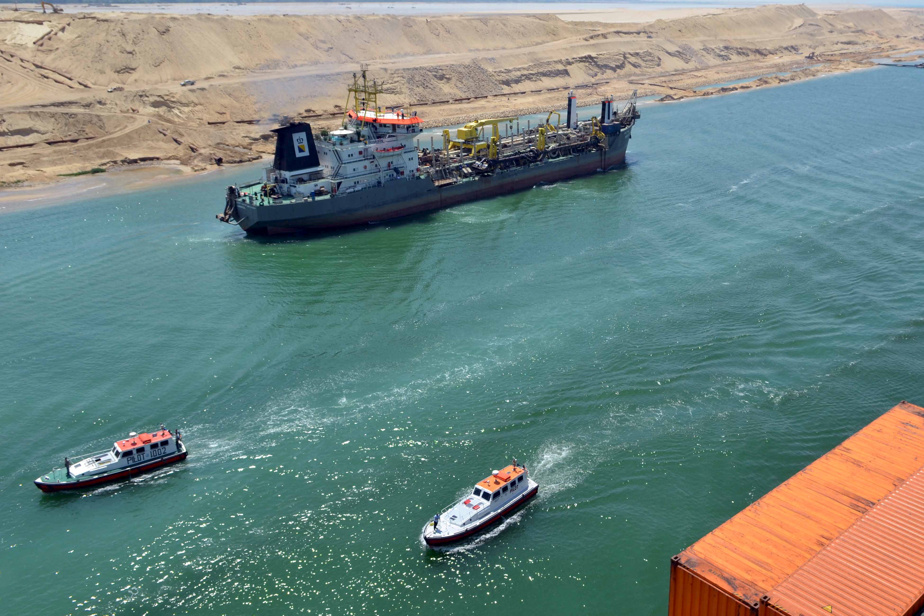The wave of attacks on merchant ships in the Red Sea is forcing businesses to take longer routes and threatens to harm an already faltering global economy.
The Houthis, an Iranian-backed armed group that controls most of northern Yemen, have used drones and missiles to target shipping since Hamas attacked Israel on October 7. This has forced some shipping giants and oil companies to avoid the Suez Canal, which could hamper global trade and drive up the cost of imported goods.
The Suez Canal is a vital artery for container ships and oil tankers. Since its opening in 1869, goods and fuel from Asia and the Middle East have been transported to Europe and the United States through this canal. For more than a century, Britain and other world powers have engaged in wars and geopolitical intrigue over the canal, now controlled by Egypt.
About 50 ships pass through the Suez Canal each day and recent data suggests that, since Monday, at least 32 have been diverted, said Chris Rogers, head of supply chain research at S
Peter Sand, chief analyst at Xeneta, a shipping market analysis firm, described the problems in the Red Sea and canal as “a slow-burning disaster that really exploded this weekend.” He added: “Everyone involved in global shipping, especially in the supply chains linked by the Suez Canal, is trying to figure out where their goods are and where they are going. »
US Defense Secretary Lloyd Austin announced Monday the creation of a new multinational force tasked with “jointly addressing security challenges in the southern Red Sea and Gulf of Aden, with the aim of to ensure freedom of navigation for all countries and to enhance the security and prosperity of the region.”
The joint effort, which will involve the armed forces of the United States, Britain, Bahrain, Canada and France, was announced after a US warship on Saturday shot down 14 drones launched from controlled territory by the Houthis.
On Monday, oil company BP announced it was suspending shipments through the Suez Canal, citing “deteriorating security conditions for shipping.”
Companies that transport products such as toys and electronics from Asia in vast container ships also said they would stop sending ships to the region. A ship belonging to one of these companies, Maersk, was attacked last week.
Maersk said Tuesday that all of its Red Sea-bound ships would be diverted from Africa via the Cape of Good Hope “to ensure the safety of [its] crew, [its] vessels and [its] cargo.” customers who are on board. Until the route is safer, the Africa detour will be “a faster and more predictable solution for customers and their supply chains.”
The instability near the Suez Canal comes at a time when drought has forced operators of the Panama Canal, another critical link in global supply chains, to reduce the number of ships that can use the waterway.
Thus, 12% of world trade passes through the Suez Canal and 5% through the Panama Canal. When shipping companies avoid canals, they often have to spend millions of dollars more on fuel for ships to take longer routes.
Sailing between Asia and Europe via the Cape of Good Hope instead of the Suez Canal is a diversion that would lengthen the journey from Singapore to Rotterdam, Netherlands, by 3,300 miles, or nearly 40 percent.
Sand said taking the Cape of Good Hope route could add about a million dollars, or about a third, to the cost of a round trip from Asia to Europe. He added that some shipping rates had increased by 20% in recent days.
Part of this additional cost could be passed on to consumers, just as inflation is slowing in the United States and Europe.
The attacks have already appeared to drive up the price of oil. Brent, the international oil benchmark, is up about 8% over the past week.
The economic impact has increased pressure on the United States and other countries to end Houthi attacks. Shipping industry leaders have said such a force is needed.
“Closing the Suez Canal would have huge repercussions,” said Oystein Kalleklev, CEO of Avance Gas, which transports propane from the United States to Asia. “So we believe there will be enough warships to stabilize the situation. »
Panama Canal delays have prompted some shipping companies that move goods from Asia to the U.S. East Coast to route their ships through the Suez Canal. But problems in the Red Sea could now force them to go via the Cape of Good Hope, which would make these journeys even longer.
Unlike the Suez Canal, the Panama Canal uses locks, which lift ships to move them from one ocean to the other. The lack of rain reduced the amount of water available to fill the locks, and the Panama Canal Authority had to reduce the number of ships using the waterway. This number could decrease further, as the dry season is only just beginning.
“The Panama Canal situation,” Mr. Kalleklev said, “is not going to end any time soon. »
